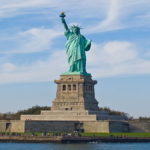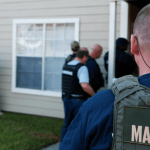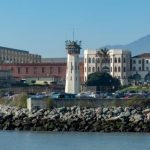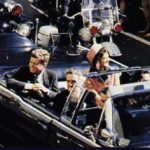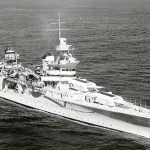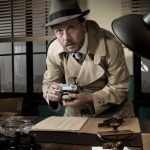 Weird Stuff
Weird Stuff  Weird Stuff
Weird Stuff  Health
Health Ten Confounding New Inventions from the World of Biomedicine
 Creepy
Creepy 10 Death Superstitions That Will Give You the Creeps
 Movies and TV
Movies and TV 10 Movies That Get Elite Jobs Right, According to Experts
 Weird Stuff
Weird Stuff 10 Times Real Laws Were Based on Bizarre Hypotheticals
 Animals
Animals 10 Inspiring Tales of Horses Being Human
 Mysteries
Mysteries Top 10 Haunting Facts About the Ghost Ship MV Alta
 History
History 10 Surprising Stories About the Texas Rangers
 Humans
Humans 10 Philosophers Who Were Driven Mad by Their Own Theories
 Miscellaneous
Miscellaneous 10 Video-Game-Worthy Weapons and Armors from History
 Weird Stuff
Weird Stuff 10 Warning Labels That Exist Because Someone Actually Tried It
 Health
Health Ten Confounding New Inventions from the World of Biomedicine
 Creepy
Creepy 10 Death Superstitions That Will Give You the Creeps
Who's Behind Listverse?

Jamie Frater
Head Editor
Jamie founded Listverse due to an insatiable desire to share fascinating, obscure, and bizarre facts. He has been a guest speaker on numerous national radio and television stations and is a five time published author.
More About Us Movies and TV
Movies and TV 10 Movies That Get Elite Jobs Right, According to Experts
 Weird Stuff
Weird Stuff 10 Times Real Laws Were Based on Bizarre Hypotheticals
 Animals
Animals 10 Inspiring Tales of Horses Being Human
 Mysteries
Mysteries Top 10 Haunting Facts About the Ghost Ship MV Alta
 History
History 10 Surprising Stories About the Texas Rangers
 Humans
Humans 10 Philosophers Who Were Driven Mad by Their Own Theories
 Miscellaneous
Miscellaneous 10 Video-Game-Worthy Weapons and Armors from History
Ten Tales from the Cuban Missile Crisis
What if this—all of this—just… wasn’t?
In October 1962, that hypothetical, and all its literal fallout, became as close to reality as ever before or since. With the introduction of Soviet nuclear-capable missiles less than 100 miles (161 kilometers) from American soil, the Cuban Missile Crisis brought arguably the most frightening fortnight in modern history. Here are ten tales exploring various players involved.
Related: 10 Little-Known Facts About The Second World War
10 Brinkmanship or Balance?
With the benefit of hindsight, the landscape leading into October 1962 was so ripe for a crescendoing crisis that it seemed inevitable.
For 17 years since World War II’s conclusion, much of humanity lived under the influence of a bicameral world, with the U.S. and USSR jockeying for dominance. But the two superpowers’ competing worldviews were not represented by competitive military might. While both countries had nuclear arsenals, the U.S. enjoyed a lopsided advantage in rapid payload delivery capabilities.
In other words, the U.S. could hit the USSR with far more nukes—and far faster—than vice versa. This advantage stemmed from the burgeoning NATO alliance, which gave the U.S. strategic allies in close proximity to the USSR, including missile sites in Turkey. Understandably, then, the Soviets sought a toehold in the Americas to establish a measure of balance.
Cuba made a natural partner for the USSR. Not only did the two countries’ governments espouse socialist principles, but Cuban leader Fidel Castro had every reason to be fearful of the superpower just 90 miles (145 kilometers) to his north. Most notable, of course, was the disastrous Bay of Pigs invasion in April 1961, in which U.S.-backed anti-Castro refugees stormed the beaches of Cuba, only to be crushed by Castro’s forces.
Castro also suspected what history has since confirmed: that the U.S. government was trying to kill him. All totaled, the USSR placing missiles with a like-minded, strategically located ally should have surprised no one.[1]
9 Two-Time Loser Turned Unsung Hero
Among the Cuban Missile Crisis’s least appreciated contributors was Adlai Stevenson, the U.S. ambassador to the United Nations. To many, his role as a crucial de-escalator may be surprising; after all, it was Stevenson who famously called out his Soviet counterpart in an internationally televised interrogation at the UN. After daring the Soviets to deny the existence of missiles in Cuba, Stevenson brazenly barked, “Don’t wait for the translation! Yes or no?”
Stevenson’s bravado stemmed from his unique political position; namely, he had little to lose. Twice his party’s nominee for president, he’d been trounced in consecutive elections by Dwight D. Eisenhower. This left him unencumbered by ambitions or arrogance.
This freedom, combined with a brilliant foreign policy mind, helped Stevenson see the ultimate way out of the 13-day nuclear near-miss well before anyone else in the Kennedy Administration. On October 17—just one day after what most consider the crisis’s inception—Stevenson implored JFK to abandon the growing consensus to aerially attack Cuba.
Air strikes against Cuba, Stevenson wrote, would “have such incalculable consequences that I feel you should have made it clear [to your advisors] that the existence of nuclear missile bases anywhere is negotiable before we start anything.”
Instead, Stevenson suggested removing certain U.S. missile sites in Europe in exchange for the Soviets removing theirs from Cuba. Stevenson concluded the note with his foreign policy mantra: “Blackmail and intimidation never; negotiation and sanity always.”[2]
8 Curtis LeMay & the Unhinged Joint Chiefs
While the embarrassing failure of the previous year’s Bay of Pigs invasion made Castro more amenable to hosting Soviet nukes, it also did something that may have saved civilization: It made a young president wary of listening to overly hawkish military advice, especially from wizened generals whose trigger-happiness was outdated in an era of mutually assured destruction.
One such macho military stereotype was Air Force Chief of Staff Curtis LeMay. On October 19, as the Joint Chiefs met with JFK and cabinet members, the option of a naval quarantine—basically a rebranded blockade because blockades are technically acts of war—emerged as a means of showing strength without direct force.
LeMay vehemently disagreed, his tone in calling for direct military engagement bordering on insubordination. “I think a blockade would be considered… a pretty weak response,” he said. In one testy exchange, LeMay condescendingly told Kennedy that he was “in a pretty bad fix”; the witty Kennedy retorted, “Well, you’re in it with me, general.”
LeMay went so far as to compare choosing a blockade over immediate bombing to the Allies appeasing Adolf Hitler prior to World War II. So buffoonishly bellicose was LeMay that Stanley Kubrick based two warmongering generals in his 1964 classic Dr. Strangelove on him, including the nuke-happy Jack D. Ripper. In 1968, LeMay went on to endorse the liberal use of nuclear weapons as running mate to Independent Party presidential candidate and racism enthusiast George C. Wallace. Hard pass.[3]
7 Four Foreboding Words
Despite widespread rumors that something worrisome was brewing, the Kennedy administration kept the extent of the emergency under wraps for nearly a week. On Monday, October 22, the president finally addressed the American people, revealing his knowledge of “unmistakable evidence” that “offensive missile sites [are] now in preparation” in Cuba.
However, it was a four-word phrase JFK used to describe the Caribbean nation that brings into question whether the U.S. fully understood the deadly playing field. The missiles, Kennedy stated, were being installed by the USSR “on that imprisoned island.”
After detailing the missiles’ deadly nuclear potential, Kennedy again reduced Cuba to bystander status. “This urgent transformation of Cuba into an important strategic base… constitutes an explicit threat to the peace and security of all the Americas…”
While the direct action announced in the speech was reasonable—a naval quarantine of Cuba to prevent additional weapons deliveries—the assessment of Cuba misrepresents (possibly intentionally but likely ignorantly) the number of belligerents the U.S. was facing. Fidel Castro was the furthest thing from a Soviet puppet in this staring contest; quite the opposite, in fact, as four days later, the Cuban leader would urge Khrushchev to launch a first-strike nuclear attack against America, regardless of the consequences to his overmatched nation.
Both Kennedy’s October 22 speech and his years of dealing with Cuba’s revolutionary leader were littered with miscalculations and underestimations. Had Castro had his way, World War III would have almost certainly been triggered.[4]
6 A Not-So-Feel-Good Moment: JFK’s Multiple Medications
Intellectually and temperamentally, John F. Kennedy was exceptionally well-equipped to be president. Physically, he was a mess. Though hidden from the public, it’s become well-documented that Kennedy suffered from myriad maladies, including digestive problems and Addison’s disease. Often in excruciating pain, JFK also wore a back brace. (In fact, it’s possible that Kennedy’s back brace cost him his life on November 22, 1963, by keeping him upright to receive the fatal head wound.)
It wasn’t until the 2000s that the extensive cocktail of medications JFK took came to light. In addition to the synthetic adrenal hormone for Addison’s disease, Kennedy regularly consumed painkillers, antianxiety agents, stimulants, and sleeping pills. Often, doses were increased during stressful periods. And a nuclear standoff certainly counts as stressful.
By the time the missile crisis occurred, Kennedy was taking antispasmodics for colitis, antibiotics for a urinary tract infection, and high doses of hydrocortisone and testosterone. This is in addition to codeine, Demerol, and methadone for pain; the stimulant Ritalin; meprobamate and librium for anxiety; and barbiturates for sleep.
And, of course, topping it off was whatever Max Jacobson, the infamous “Dr. Feelgood,” was pumping into JFK’s veins. Ever the chemical tinkerer, Jacobson employed a number of concoctions, though typically with one consistent ingredient: amphetamines—aka speed. Despite everything, recordings of meetings and other evidence showcase Kennedy’s clearheadedness throughout the crisis.[5]
5 Duck & Cover (and Be Incinerated)
These days in the U.S., we traumatize our schoolchildren the old-fashioned American way: by preparing them for a maniac with an assault rifle charging into their classrooms. In addition to fire drills, our children now participate in exercises with innocent-sounding names like “safety drills.” My seven-year-old regularly joins his second-grade friends in a dark closet, hiding from a mock mass killer. You know, just like the Founding Founders intended when they penned the Second Amendment.
But I digress. As early as 1951, Baby Boomer schoolchildren were being advised via PSAs—often by cartoons like shelled safety guru Bert the Turtle—to “duck and cover” in the event of a sudden emergency. In other words, get under your desk and play Hide & Seek with a mushroom cloud.
Of course, the public isn’t THAT stupid. As the Cuban Missile Crisis drew to a head, duck and cover gave way to hoard and panic. For starters, the retail reaction was unsurprising: Grocery and supply stores were overwhelmed as customers stockpiled nonperishables and necessities like water, canned foods, toilet paper, flashlights, and batteries.
From there, public action ranged from the logistical to the ecclesiastical. Many constructed hasty fallout shelters or holed up in their basements. Special religious services were held because Baby Jesus hates nukes. Many fled the likeliest targets—major eastern U.S. cities like Washington, D.C., New York, and Miami—for rural areas.[6]
4 The Most Dangerous Day, Part 1: The Lone U.S. Casualty
Most historians peg the standoff’s most precarious day as Saturday, October 27. As dawn broke in Washington, Moscow was digesting the assessment of the Soviet commander in Cuba, who believed a U.S. attack was imminent within 24-72 hours. He wasn’t exaggerating: That morning, the U.S. Joint Chiefs of Staff reiterated their recommendation that Kennedy bomb the Cuban weapons installations. Meanwhile, Fidel Castro pleaded for a preemptive strike against the U.S.
Then, the inevitable occurred. Fourteen miles (22.5 kilometers) above Cuba, U.S. Air Force pilot Rudolf Anderson Jr. was conducting a reconnaissance mission in an unarmed U-2 spy plane. This wasn’t his first dance; two weeks prior, Anderson flew one of the surveillance flights that revealed the military buildup and initiated the crisis. The Soviets immediately detected the plane on radar and became concerned that Anderson could photograph tactical nuclear weapons near the U.S. naval base at Guantanamo Bay.
With the commanding general—the only person authorized to order a shootdown—nowhere in sight, Lieutenant General Stepan Grechko took the fate of civilization into his own hands. “Our guest has been up there for over an hour,” he told subordinates before referring to Anderson’s designation on Soviet radar: “Destroy Target Number 33.” Two antiaircraft missiles were fired; one struck the plane’s cockpit, likely killing Anderson instantly. The plane plunged 72,000 feet (21,946 meters) to the tropics below.[7]
3 The Most Dangerous Day, Part 2: Détente or Death
Rudolph Anderson’s death solidified one thing in the tense, tenuous situation: It wouldn’t remain as-is. With blood officially shed, the crisis would either wind down or heat up to a point of no return. And Soviet Premier Nikita Khrushchev knew it.
“It was at that very moment—not before or after—that father felt the situation was slipping out of his control,” Khrushchev’s son, Sergei, wrote later. The Soviet Premier was quickly learning that, despite his longstanding authoritarian rule, the remoteness of the battleground and sheer number of players meant his control was anything but absolute. A nuclear holocaust could ignite via rogue subordinates or honest mistakes.
Kennedy’s position was even less enviable: His opponent had landed the first blow, and while retaliation was expected, doing so would likely lead to all-out nuclear conflagration. Even a measured, tit-for-tat response was gambling the lives of tens of millions of Americans merely to save face.
That Kennedy chose to be the bigger man might be the most important single decision of the 20th Century. “It isn’t the first step that concerns me,” he told advisers, “but both sides escalating to the fourth or fifth step. And we won’t go to the sixth because there [would be] no one around to do so.” Mankind, JFK knew, was running out of steps.
JFK prayed that his Soviet counterpart was equally clear-eyed. He summoned his brother for a last-ditch effort to avert catastrophe.[8]
2 A Tale of Two Letters
On October 27—the same day Rudolph Anderson was shot down—JFK received a letter from Soviet Premier Nikita Khrushchev. It was conciliatory, which brought Kennedy some measure of relief.
Just hours later, though, Kennedy received a second, sterner missive from Khrushchev. This second letter carried an air of officiality since Khrushchev announced its terms publicly: The USSR would only agree to remove its missiles from Cuba if the U.S. pledged to a) not invade Cuba and b) immediately remove its missile installation in Turkey, well within range of reaching the USSR.
Was Khrushchev losing his grip on power—or worse, losing his mind? Kennedy was in a conundrum. A public-facing quid pro quo would bring the perception of the U.S. rewarding bad behavior and also run countercurrent to the tenets of the then-13-year-old NATO defense treaty.
Unless, Kennedy thought, the Turkey part could be kept private.
Kennedy responded directly to Khrushchev’s first, friendlier letter, a move he dubbed The Trollope Ploy after a novelist whose main character intentionally misinterprets a kind gesture as a marriage proposal. Meanwhile, he dispatched Robert Kennedy to meet secretly with Anatoly Dobrynin, the USSR’s ambassador to the U.S. The U.S. would remove the missiles from Turkey within six months or so, he assured the Soviet representative—but the arrangement must not be made public.
The message delivered, both Kennedys—and the entire world—went to bed that night not knowing whether the sun would come up again.[9]
1 Back from the Brink
On October 28, the sun did indeed come up—and then, a letter came in. As was Khrushchev’s style, it was longwinded and overly verbose. But it was the best possible news. The missive’s third paragraph ranks among the most important run-on sentences in human history.
“In order to eliminate as rapidly as possible the conflict which endangers the cause of peace, to give an assurance to all people who crave peace, and to reassure the American people, who, I am certain, also want peace, as do the people of the Soviet Union, the Soviet Government, in addition to earlier instructions on the discontinuation of further work on weapons construction sites, has given a new order to dismantle the arms which you described as offensive, and to crate and return them to the Soviet Union.”
While the letter would ramble on for several more paragraphs, including a diatribe about supposed “piracy” fomented against the Cuban government, the key takeaway was clear: The crisis was receding. Crucially, there was no further demand for—or acknowledgment of—the U.S. removing its missiles from Turkey. But six months later, in April 1963, the U.S. did just that.
Kennedy emerged from the crisis looking exceptionally strong. In fact, the naval quarantine of Cuba continued for nearly another month, reinforcing America’s unbending backbone. On November 20, JFK finally announced its termination following confirmation that all missiles and offensive bombers had been withdrawn.[10]
